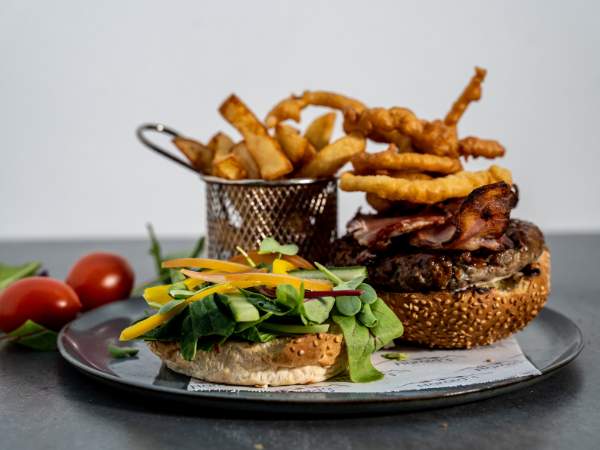News
10 ideas with covetable cauliflower, the veggie world’s comeback kid
Monday, July 28th, 2014 Forget soggy and smelling of socks, the humble cauliflower can be a lot more exciting than your childhood self remembers – if you prepare it properly.
Forget soggy and smelling of socks, the humble cauliflower can be a lot more exciting than your childhood self remembers – if you prepare it properly.
While boiling cauliflower dramatically destroys its nutritional compounds (not to mention palatability), steaming and microwaving can make it tender without losing its goodness. It’s the most digestible member of the cabbage family, so cauliflower can be eaten raw, as well as dipped in cheese fondue, puréed and baked in a soufflé, or simply sautéed in a pan with butter. (Our editor has some more great ideas.)
The wholesome vegetable has seen unprecedented popularity in recent months as the low-carbohydrate high-fat diet has crashed into our consciousness, but there’s a good reason for that. Cauliflower is low in carbohydrates and calories but high in dietary fibre, folate and vitamin C. It is rich in several phytochemicals that are considered to be beneficial to human health and to protect against cancer.
The blue-green leaves that surround its edible heart and delicate ivory florets should be crisp when you select the head of cauliflower for your grocery basket. Food bible Larousse Gastonomique advises not to buy one without leaves, as it is most likely reaching retirement age.
If you can even find it, that is. Thanks to Professor Tim Noakes’s banting diet, cauliflower is so covetable that sales of the vegetable have shot up 150% in some supermarkets (as reported by Times Live). It’s now being hailed as a great wheat-potato-rice replacement in pizza bases, shepherd’s pie and even risotto.
If you can get your hands on it, here are some quick ideas with cauliflower:
1. For an easy starter or snack, cut your cauliflower into bite-size florets. Dip them into a mixture of corn flour, salt and pepper, and deep-fry in sunflower or peanut oil. Serve with a sweet chilli dipping sauce.
2. To make mash, gently steam your cauliflower florets and a few cloves of crushed garlic before blitzing in a processor. Add buttermilk or cream cheese, butter, salt and pepper and pulse until smooth and creamy. Sprinkle in some parmesan for an extra cheesy kick and drizzle with olive oil.
3. For an Asian twist on the same theme, try crispy tempura batter on tender broccoli and cauliflower florets and serve with tangy garlic aioli.
4. If there were ever a vegetable meant to be covered in cheese sauce, cauliflower is it. It pairs particularly well with strong cheeses, such as cheddar and Parmesan, and cream too.
5. Cauliflower takes well to roasting, especially if it’s done with whole cloves of garlic. The flavour becomes sweet and complex.
6. For a quick winter salad, toss florets of cauliflower in a mixture of sour cream and poppy seeds.
7. Cauliflower is one of the main ingredients in the Indian dish of aloo gobi. Start by frying onions in ghee or vegetable oil until translucent. Add ginger, mustard seeds, ground turmeric, ground fenugreek, chilli powder, curry leaves, whole green chillies and salt. Stir well and cook for a few minutes. Add cubes of potatoes, chopped tomatoes, cauliflower florets, lemon juice, sugar and a bit of water and bring to the boil. Reduce the heat and simmer until the potatoes have cooked through. Aloo gobi is delicious served with piping hot naan bread.
8. For another lovely vegetarian supper, parboil cauliflower florets in salted water. Coat them in a mixture of flour, paprika, salt and pepper. Fry until crisp, drain, and serve with salsa verde, or a dressing of chopped parsley, mint, basil, garlic, capers, olive oil and lemon juice.
9. To make risotto out of cauliflower florets instead of rice, grate it or pulse in a food processor until it’s grain-sized. Squeeze between some paper towels to remove any excess moisture and then proceed as usual. Try this recipe for baby beetroot, blue cheese and walnut risotto.
10. Give your cauliflower punch by rolling steamed florets in a mixture of breadcrumbs, thyme and parmesan cheese before dipping in eggs and frying them in batches. See the full recipe here.












